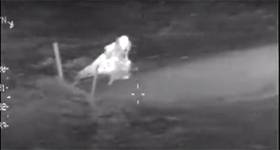Displaying items by tag: Jean Conchaudron
Rescued Yachtsman Repeats Tribute To Coastguard Saviours After Irish Sea Ordeal
#Rescue - The French sailor rescued from the hull of his upturned yacht off the Wexford coast this summer has again paid tribute to the Irish Coast Guard crew who came to his aid.
As previously reported on Afloat.ie, yachtsman Jean Conchaudron was plucked from the sea after keel failure led to him capsizing en route from Cornwall to Dublin on the night of Tuesday 26 July.
Quick-thinking Conchaudron activated his personal locator beacon, or PLB, after scrambling out of the water onto the upturned hull.
That action immediately notified the UK coastguard, who alerted their Dublin-based counterparts who in turn sent the Wexford-based SAR helicopter Rescue 117 to his location.
It was winchman Adrian O'Hara who was the first to greet Conchaudron as he lifted him from the boat to safety, as the Irish Mirror reports.
And the experienced French solo sailor said it was literally a matter of life and death before O'Hara and his fellow Rescue 117 crew arrived.
“Thank you my friend! These are my first words, the only words that come to me," he said. "I have a friend, a true friend, someone who is ready to risk his life and those of his friends, every day for an ordinary guy like me.”
In other coastguard news, TheJournal.ie has an in-depth feature following a day in the life of Rescue 117's chief pilot Mark McDermott, who joined the Waterford-based crew after retiring fro the Royal Navy in 2005.
“Every job we do is challenging in a different way,” he says. "We could be on a mountain rescue, managing an effective hover in massive up and down drafts, or we could be out to sea evacuating a cardiac patient from a boat and getting them to hospital, or we could be carrying a child with meningitis to hospital.
"You never know what you’ll be doing."





























































